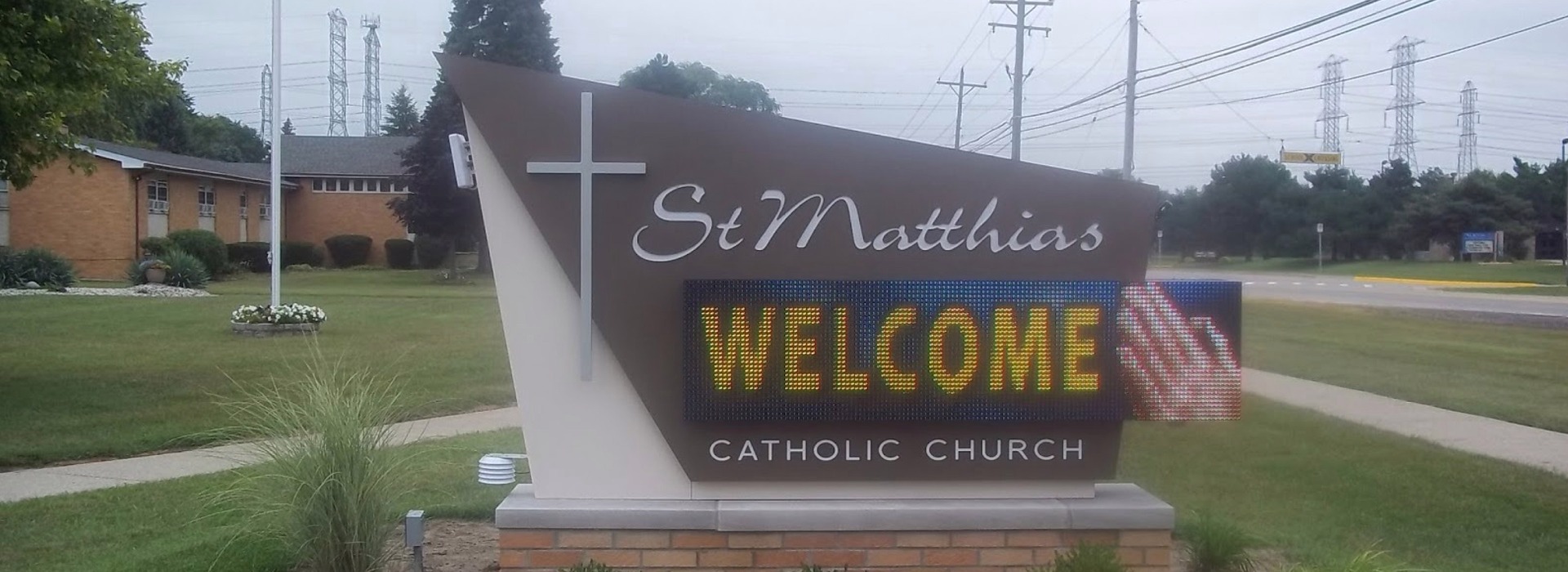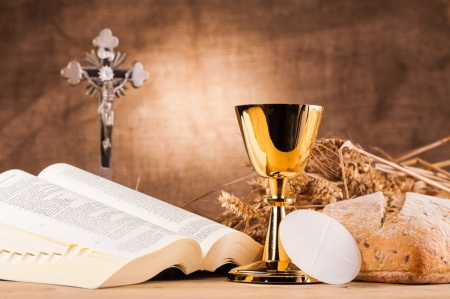The Sacrament of the Eucharist
The holy Eucharist completes Christian initiation. Those who have been raised to the dignity of the royal priesthood by Baptism and configured more deeply to Christ by Confirmation participate with the whole community in the Lord’s own sacrifice by means of the Eucharist.
At the Last Supper, on the night he was betrayed, our Savior instituted the Eucharistic sacrifice of his Body and Blood. This he did in order to perpetuate the sacrifice of the cross throughout the ages until he should come again, and so to entrust to his beloved Spouse, the Church, a memorial of his death and resurrection: a sacrament of love, a sign of unity, a bond of charity, a Paschal banquet ‘in which Christ is consumed, the mind is filled with grace, and a pledge of future glory is given to us.
With the Eucharistic Prayer – the prayer of thanksgiving and consecration – we come to the heart and summit of the celebration:
In the preface, the Church gives thanks to the Father, through Christ, in the Holy Spirit, for all his works: creation, redemption, and sanctification. The whole community thus joins in the unending praise that the Church in heaven, the angels and all the saints, sing to the thrice-holy God.
The Church asks the Father to send his Holy Spirit (or the power of his blessing) on the bread and wine, so that by his power they may become the body and blood of Jesus Christ and so that those who take part in the Eucharist may be one body and one spirit.
In the institution narrative, the power of the words and the action of Christ, and the power of the Holy Spirit, make sacramentally present under the species of bread and wine Christ’s body and blood, his sacrifice offered on the cross once for all.
In the communion, preceded by the Lord’s prayer and the breaking of the bread, the faithful receive “the bread of heaven” and “the cup of salvation,” the body and blood of Christ who offered himself “for the life of the world”:
Because this bread and wine have been made Eucharist (“eucharisted,” according to an ancient expression), “we call this food Eucharist, and no one may take part in it unless he believes that what we teach is true, has received baptism for the forgiveness of sins and new birth, and lives in keeping with what Christ taught.
To prepare for worthy reception of this sacrament, the faithful should observe the fast required in their Church. Bodily demeanor (gestures, clothing) ought to convey the respect, solemnity, and joy of this moment when Christ becomes our guest.
To respond to this invitation we must prepare ourselves for so great and so holy a moment. St. Paul urges us to examine our conscience: “Whoever, therefore, eats the bread or drinks the cup of the Lord in an unworthy manner will be guilty of profaning the body and blood of the Lord. Let a man examine himself, and so eat of the bread and drink of the cup. For any one who eats and drinks without discerning the body eats and drinks judgment upon himself.” Anyone conscious of a grave sin must receive the sacrament of Reconciliation before coming to communion.
The Church obliges the faithful to take part in the Divine Liturgy on Sundays and feast days and, prepared by the sacrament of Reconciliation, to receive the Eucharist at least once a year, if possible during the Easter season.224 But the Church strongly encourages the faithful to receive the holy Eucharist on Sundays and feast days, or more often still, even daily.
Since Christ is sacramentally present under each of the species, communion under the species of bread alone makes it possible to receive all the fruit of Eucharistic grace. For pastoral reasons this manner of receiving communion has been legitimately established as the most common form in the Latin rite. But “the sign of communion is more complete when given under both kinds, since in that form the sign of the Eucharistic meal appears more clearly.” This is the usual form of receiving communion in the Eastern rites.
Note: These are excerpts from the Catechism of the Catholic Church. For more information please follow the link below.


